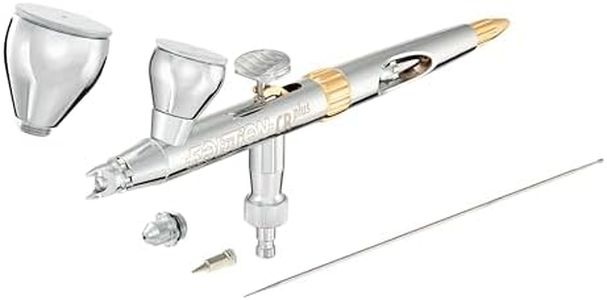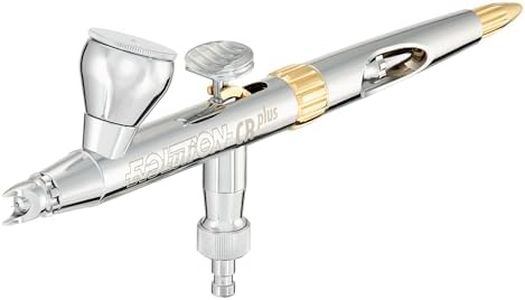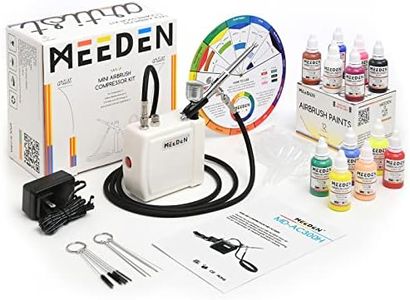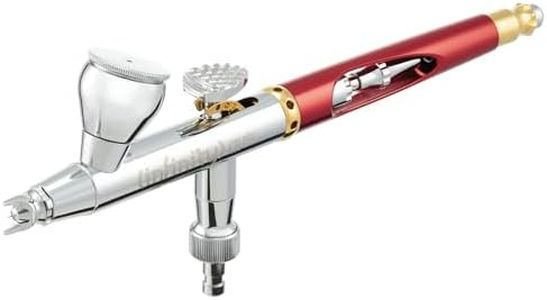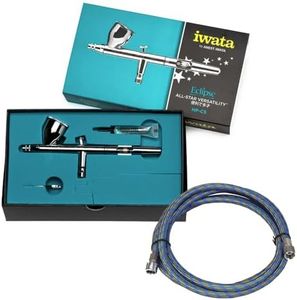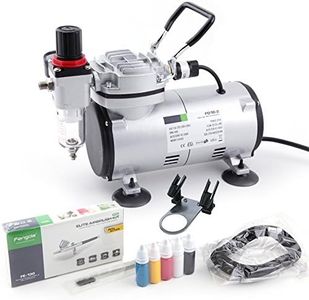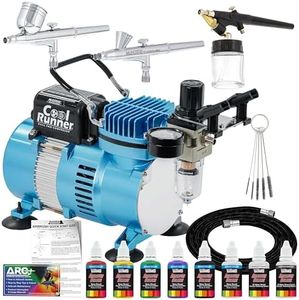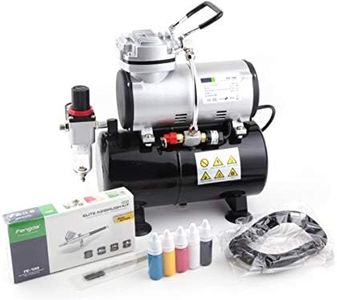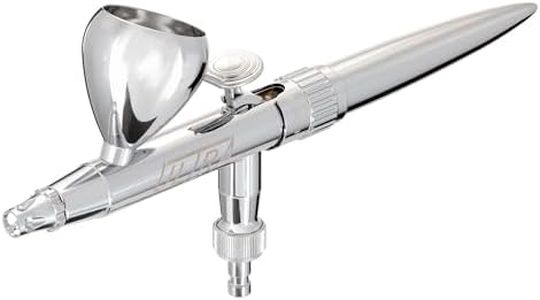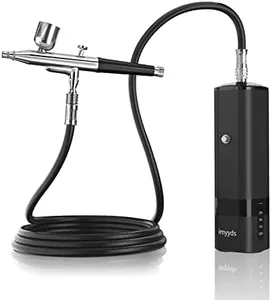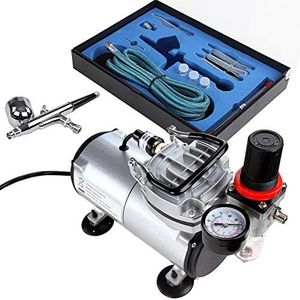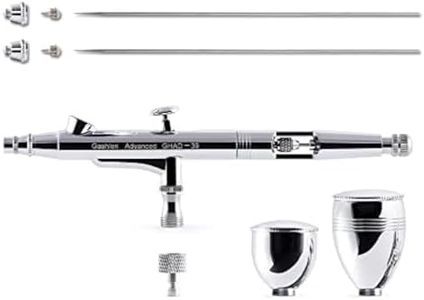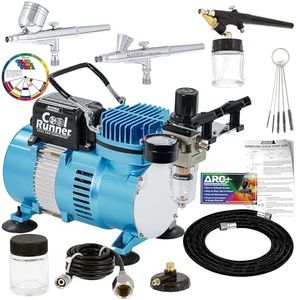We Use CookiesWe use cookies to enhance the security, performance,
functionality and for analytical and promotional activities. By continuing to browse this site you
are agreeing to our privacy policy
10 Best Airbrush Set
From leading brands and best sellers available on the web.By clicking on a link to a third party's website, log data is shared with that third party.
Buying Guide for the Best Airbrush Set
Choosing the right airbrush set can make a huge difference in your creative projects, whether you’re working on models, cake decorating, illustration, or nail art. The ideal set will fit your type of work, comfort level, and how much control you want over paint flow and detail. To get the best match, consider what you want to accomplish and how often you’ll use the tool. Understanding the main specifications will help you pick an airbrush set that feels good in your hand and delivers the results you want.Type of AirbrushThe type of airbrush refers to how the paint mixes with air inside the tool—primarily single-action or double-action. Single-action airbrushes let you control only the airflow, while the paint flow is fixed, making them easier for beginners and good for broader coverage. Double-action airbrushes allow you to control both air and paint flow separately, giving you more precision and versatility for detailed work. Pick a single-action if you want something simple and mainly for uniform coverage; choose double-action if you want to do detailed or shaded artwork and are willing to practice more with the controls.
Feed SystemThe feed system tells you how the paint is delivered into the airbrush and includes gravity feed, siphon feed, and side feed. Gravity feed has a cup on top and works with low air pressure, making it suitable for fine detail and less paint waste. Siphon feed uses a jar or bottle hanging below, which holds more paint—great for large projects but may need higher air pressure. Side feed sits on the side and balances between the two. Pick gravity feed for detail work, fine lines, and when using small amounts of paint; siphon feed if you’ll be painting larger areas or several colors; and side feed for versatility or if you prefer a different feel in your hand.
Needle and Nozzle SizeNeedle and nozzle size decide how fine or broad your spray pattern is. Finer needles and nozzles (like 0.2-0.3 mm) give you ultra-thin lines and are great for detail work; medium sizes (around 0.4-0.5 mm) suit general use, blending, and moderate detail; larger sizes (0.5 mm and up) are better for spraying backgrounds or thick paints. Consider the kind of work you do: for tiny, intricate detail, go fine; for general arts and crafts, medium is usually best; for broad areas or heavy paint, opt for a bigger size.
Compressor Type and Air PressureThe compressor provides the air needed for spraying. Portable, smaller compressors are quieter and good for hobbies and light jobs but might have less consistent pressure. Larger compressors provide steady pressure for continuous use. Adjustable air pressure is important: lower pressures give you more control for details, higher for coverage and thicker paints. If you plan extended sessions or want to spray thick paints, a bigger, adjustable compressor is helpful. For short, small projects, a compact compressor may be enough.
Ease of Cleaning and MaintenanceAirbrushes need to be cleaned often to work well and stay clog-free. Some models are designed to come apart easily, which makes cleaning easier. If you’ll use your airbrush for several colors or thick paints, pick a model with easy access to all parts so cleaning is less of a hassle. An airbrush that’s tricky to reassemble may be frustrating, especially for beginners, so consider models known for user-friendly maintenance if you value convenience.
Included AccessoriesAn airbrush set might come with extra needles, nozzle sizes, cleaning tools, hoses, or even multiple airbrushes. These accessories can give you more flexibility and let you switch between different spray patterns, colors, or projects without buying extra parts. If you want to try a variety of techniques or don’t want to buy accessories separately, a set with more included tools can be a good fit. The right choice depends on whether you prefer the convenience of an all-in-one kit or plan to upgrade parts individually.
